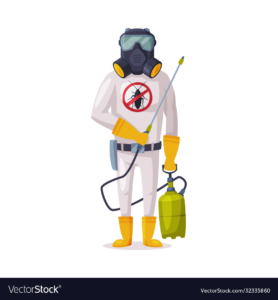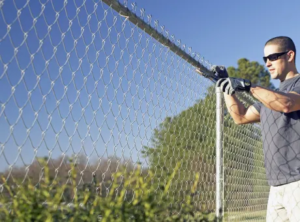Articles are a great way to engage your audience and show expertise on a particular topic. They can inspire interaction, drive traffic, and convert customers.
Pests are organisms that pose a health threat, like rats and mice, and cause damage to property, such as cockroaches and silverfish. Some also carry diseases, such as rat-borne hantavirus and salmonella. Contact Pest Control Burnaby BC now!

Identifying pests is the first step in any pest control strategy. Accurate identification enables you to select and apply pest control methods that are designed for the specific pest, minimizing collateral damage. For example, the treatment needed for a cockroach infestation differs from that required for a termite infestation. Proper identification can also ensure that you take appropriate safety measures for handling any pesticides you may use.
A thorough knowledge of pest life cycles, habitat requirements, and habits is crucial for accurate pest identification. This information allows you to target your management tactics to the most vulnerable stages of the pest’s life cycle or at the times of year when it is most active.
Insect pests often change appearance as they develop from larva to pupa to adult, so observing the physical characteristics of individual insects is an important part of pest identification. You can learn to recognize key morphological features (shape of mouthparts, wings, legs, or antennae) through online insect identification guides and printed field guides.
Observe damage to crops and structures around your property, and keep a log of the types of pests you see to help you with future identifications. It is also helpful to know when pests are typically present so that you can anticipate them and prevent them from damaging your plants, trees or house.
If you are unable to identify a pest, contact an expert for guidance. You can find professionals at a number of local agricultural extension offices, horticultural societies and greenhouses. You can also find experts through national identification services, which provide a high level of taxonomic accuracy for USDA’s plant protection and quarantine programs.
Preventing pests before they become a problem can save you time and money. Inspect your home for access points and remove any materials they could be hiding under or behind, such as rotting wood, trash or clutter. Identify their breeding sites and eliminate them, such as by removing pet feces promptly, ensuring that garbage cans are tightly closed and cleaning compost piles regularly.
Pesticides
A pesticide is any substance used to destroy unwanted organisms that interfere with food production, such as disease-carrying mosquitoes and ticks, rodents and weeds. It may be an insecticide to kill insects, fungicide to control fungus or herbicide to destroy weeds. It may also be a repellent, a defoliant or a desiccant to facilitate harvesting or drying. The federal Environmental Protection Agency (EPA) reviews all pesticides before they are sold in the United States. State and local governments often have their own review processes for pesticide products.
The EPA classifies pesticides according to how they act on organisms. Generally, a pesticide is grouped into “families” based on its chemical composition and how it works to destroy the organism. For example, organophosphates work by affecting the nerve impulse transmissions in pests’ brains. Other pesticides work by burning, suffocating, or poisoning organisms. Some are made from naturally occurring substances, while others are synthetically produced in labs.
While most of the chemicals used as pesticides are designed to target only one type of organism, a large percentage end up contaminating air, water and sediments and reaching destinations far removed from their intended targets. Some of these pesticides linger in soil for years, continuing to harm plant and animal life.
Besides damaging ecosystems, many pesticides have serious negative impacts on humans and other animals that come in contact with them. They can cause short-term symptoms, such as headaches and nausea, or long-term effects, such as cancer and reproductive damage.
In addition, most older and cheaper pesticides like dichlorodiphenyltrichloroethane (DDT) and lindane persist in the environment for very long periods of time, leaving harmful residues that affect entire food chains and the ability of microbes to break them down. Using pesticides sparingly and carefully, and disposing of them correctly, can help reduce the impact on wildlife, soil health, human health, and crop yields.
The provincial and territorial governments are responsible for regulating the sale, use, storage, transport and disposal of pesticides within their jurisdictions, as well as the licensing of applicators, vendors and growers, and responding to incidents and spills. They are also responsible for training and certification in pesticide application and issuance of permits.
Pesticide Safety
When pest control methods fail and pesticides are used, it’s essential to take the necessary steps to minimize risks to people and the environment. This starts with selecting the appropriate product and carefully following the directions and warnings on the pesticide label. It also means keeping children, pets and others non-essential to the application out of the area while spraying or mixing pesticides.
Then, it’s important to ensure that any spills or leaks are cleaned up right away and the containers are disposed of properly. Lastly, proper personal protective equipment (PPE) is essential. This includes gloves, eye protection and a dust mask that fits comfortably over the mouth and nose. It’s a good idea to keep clean water and towels nearby to flush skin or eyes in case of exposure.
Many pesticides are toxic when applied incorrectly, and even when used correctly can cause damage to the environment if not disposed of or stored properly. Before pesticides can be registered, extensive testing is done to determine if they have any adverse effects on human health or the environment. This testing includes toxicity to humans, animals, fish and other plants, as well as ecosystem unbalance and food-web disruption.
Aside from ensuring that only the intended pests are targeted, it’s also important to follow application guidelines and not exceed recommended rates of application. This helps to prevent off-target contamination, which can harm wildlife and result in environmental degradation, such as soil and water pollution.
When spraying, be aware that chemicals can travel long distances through air currents and runoff. This can affect other areas of the landscape, so a thorough inspection and planning process is required before applying any products.
Many pesticides require dilution, or mixing, before they can be applied. It’s best to do this in a well-ventilated area where spills and splashes are less likely to occur and where bystanders are not exposed. If you do accidentally get any pesticide on yourself, it’s important to remove contaminated clothing and shower as soon as possible. You should also keep first aid supplies handy just in case of any accidental exposure.
Pest Control Strategies
There is more to pest control than identifying and applying a chemical to kill or repel a particular organism. Consider the environment within which that organism exists and all the living and nonliving things it interacts with. Your pest control tactics may affect other plants, animals, or even the soil and water. If you aren’t aware of the whole system, your pest management practices may not be effective or could even cause more problems.
Integrated Pest Management (IPM) is an ecosystem-based approach to pest management that uses prevention, monitoring, and resistance. This approach takes into account the life cycles of pests and their natural enemies, the effect of weather, and other factors that influence the population of the target organism. The goal of IPM is to reduce pests and their damage to acceptable levels without using excessive amounts of chemicals. IPM strategies include cultural, mechanical, biological, and chemical control measures, all of which can be used in combination.
Prevention is the most important aspect of pest control, and scouting for insects in and around your home can help. Keeping your yard free of debris such as piles of wood or leaves can discourage pests from living there. Remove your trash regularly, and make sure the lid on your garbage can is securely attached. A poorly secured lid allows pests to climb over the edge and enter your house, where they can find food and shelter.
Many people are concerned about the potential health risks of pesticides, and there are alternatives to conventional chemicals. Among these are natural predators, which can be introduced to your garden to control unwanted pests. These natural enemies are usually organisms that naturally occur in the same environment where the targeted pest lives. These natural enemies can be introduced by direct introduction, such as placing a predator in the ground to eat pests, or by “inundative releases,” which involves releasing a large number of predators to quickly overwhelm and suppress an insect problem.
Other natural control agents are parasites, which infect or destroy pests and their eggs. Disease organisms, such as viruses, bacteria, and fungi, can also be used to reduce pest populations by infecting them with disease or making them more susceptible to other pathogens. These organisms typically aren’t used as a primary method of pest control, but can be useful when other controls fail.




